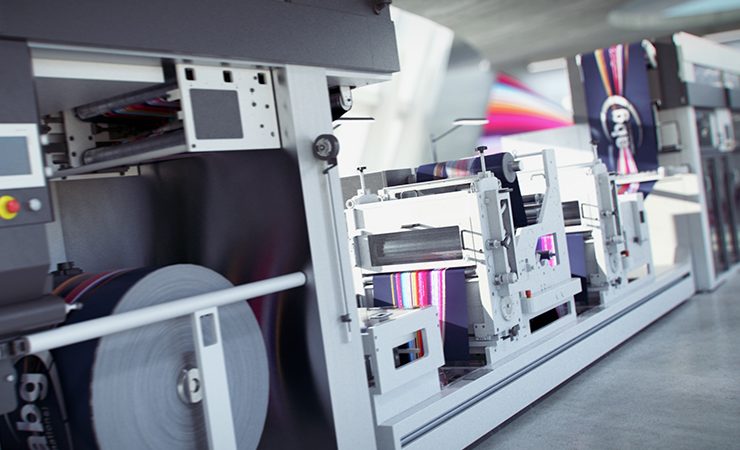Manufacturers from across the digital print industry supply chain have shared their views on what will drive future developments in technology and applications.
A plethora of new hardware and software is set to be introduced to the market in the coming weeks and months, which will enhance converters’ production capabilities and help unlock new revenue streams. This will be defined by a number of trends, such as the environment, Industry 4.0, and e-commerce and web-to-print (W2P) capability.
Erik Van Sloten, head of sales, labels at Mouvent, said, ‘We believe that the drivers for the future are centred around four elements: connectivity, digitalisation, automation and sustainability. We are working in all these directions plus one – making sure that the innovations coming out of Bobst are economically viable for the converters.’
Polly Automatic is positioning its M330 converting line as, ‘an affordable solution to open a new market door.’
Heidi Zhou, business director at the Chinese manufacturer, added, ‘As the times have changed, buyers’ demands have changed – faster, more flexible, more intelligent.’
Matt Burton, global sales director at A B Graphic (ABG), identified, ‘There will be a greater push, as we have already seen, towards automation and sustainability. Customers increasingly want their MIS systems to be linked to their print and finishing machines to monitor downtime, materials, operator efficiency, etc. This is especially vital with W2P.’
This view is reiterated by George Frolickman, director of sales at Tilia Labs, who said, ‘Industry 4.0 remains a principle focus of Tilia Labs’ technology developments, to which end the company continues to forge new relationships with other industry vendors looking to utilise Tilia Labs’ purpose-designed artificial intelligence (AI) algorithms for the customer’s advantage. Ground-breaking announcements to come in 2021 will ultimately change the way print service providers connect, access, and manage their data, for cost and efficiency benefits across every facet of digital label and packaging production.’
SisTrade is likewise assessing growing demand for automation and digitisation, which, ‘implies the corresponding analysis and decision of automated systems. Therefore, we will make a special effort to bring the most of AI solutions to position the industry companies ahead of the competition.
‘Taking into consideration the specific nature of each job type of the digital label and package printing industry, these developments allow higher data precision, which in itself means fewer mistakes due to lower human intervention. All this will result in a more effective completion of the commercial cycle and faster response to the client.’
For Jay Larsen, general manager and director of R&D, digital hardware at INX International Ink, label customers wanting to differentiate their products through innovative label designs continues to be a driver. This demand can be met by hardware such as INX’s narrow web press platform, configured inline with laser die-cutting, and which allows, ‘every single label to be 100% unique in print content and laser cut,’ he commented.
‘With the various printing and finishing options available with this system, the customer can productively create unique labels with print runs as short as one label. This allows for in-house production to have significant ROI due to reduced inventory or the additional ability to create high margin labels.’
Mr Burton added, ‘Increased productivity and waste reduction will continue to be a huge driver in 2021. We will continue to innovate our workflow offer and machine efficiencies.’
Mr Van Sloten stated, ‘In 2021, we will scale up the business further and we believe we are at the tipping point for a new chapter in the industry to be written. The Bobst group sets new standards in speed, quality and costs. We offer the widest product portfolio across flexo, all-in-one and digital platforms. We did what we said, and we are ready to shape the future of label production with our customers.’


